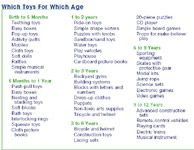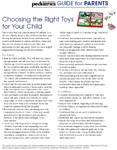The ABCs of toy safety: More than just child's play
You tell your parents to read the labels on their child's food. Tell them to read the labels on their toys as well.

Key Points

The CPSC was established in 1973 by the Consumer Protection Act to regulate children's toys in large measure via enforcement of the Federal Hazardous Substances Act (FHSA). In 1979, the CPSC issued the Small Parts Regulation, to ban toys for children under three years of age if they presented a potential choking, ingestion, or aspiration hazard. Even with their efforts, accidents and tragedies still occur. According the CPSC Web site, in 2006 an estimated 141,000 children were treated in hospital emergency rooms for toy-related injuries. Thirteen children died.
How is a toy tested?

All toys for young children must be labeled with the proper age group if it contains any hazardous materials or small parts, or if it poses a risk of electric shock. Other warnings come for toys for children age 3 to 6 if they contain small parts, small balls, marbles, or balloons. For those under age 8, the CPSC bans electrically-operated toys with heating elements, or sharp points or edges. Fabric products usually will bear a label saying flame retardant/resistant. Electrical toys carry a "UL Listed" (Underwriters Laboratory) approval label. Arts and crafts toys are approved by the American Society for Testing and Materials, listing content and safety status.
However, no engineering tests can perfectly simulate the "use and abuse" actual children subject toys to, which is why the CPSC has the authority to recall any toys presenting hazards not covered by the regulations. Newly-learned toy hazards are reported on the CPSC Web site, and frequently become news stories.
Parents & Co.
According to the Toy Industry Foundation, toys are voluntarily labeled by toy companies based on four criteria:
It notes that the toy industry voluntarily puts warning labels on crib gyms: these should be removed when the baby can kneel, to avoid a strangling hazard. Other safety measures include making squeeze toys and teethers large enough to not be a choking hazard, ensuring that toy chest lids can't fall on a child, and limiting string length on crib/playpen toys to avoid the risk of strangulation.